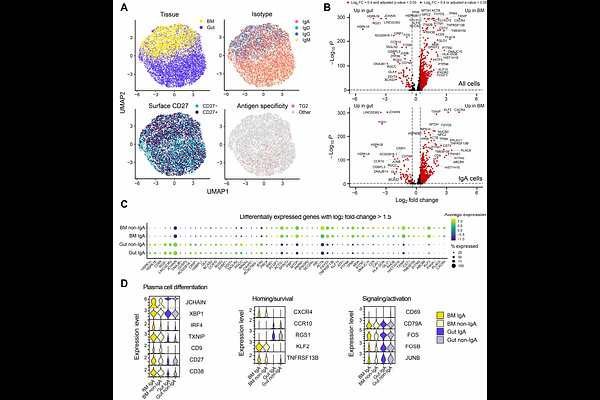Distinct systemic and gut IgA responses to bacteria of the human upper gastrointestinal tract

Distinct systemic and gut IgA responses to bacteria of the human upper gastrointestinal tract
Vaz, F.; Lindeman, I.; Hoffmann, H. H.; Skagen, C.; Steffensen, A. K.; Bjornholt, J. V.; Tjonnfjord, G. E.; Lundin, K. E. A.; Sollid, L. M.; Iversen, R.
AbstractThe mucosa lining the gastrointestinal tract harbors the body\'s largest population of plasma cells, most of which produce dimeric IgA destined for release into the lumen. In addition, there is systemic production of monomeric IgA circulating in the blood. Little is known about the connection between systemic and mucosal IgA. To address this relationship and to explore antibody responses against the microbiota, we isolated bacteria from duodenal biopsies and assessed antibody reactivity. Systemic IgA showed reactivity to bacteria of the upper gastrointestinal tract with a preference for binding Neisseria species, while duodenal IgA showed broader reactivity. We found limited clonal overlap between gut and bone marrow plasma cells of individual donors, yet a few shared clones specific to bacterial antigens were identified. Despite showing clonal overlap, gut and bone marrow plasma cells have distinct IgA subclass distributions, and they likely depend on B-cell activation at discrete anatomical sites.